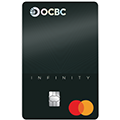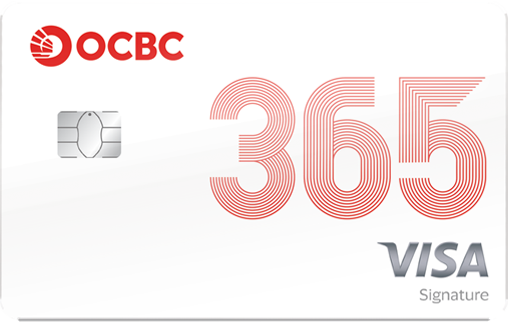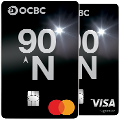6 myths about SRS everyone should know about
6 myths about SRS everyone should know about
In Singapore, majority of the population are aware of the Central Provident Fund (CPF) as well as the various CPF schemes. However, many Singaporeans may not know much about the Supplementary Retirement Scheme (SRS), let alone participate in the scheme. One possible key reason is that the SRS is termed as a retirement plan, which many Singaporeans would not have considered in the early years of their career.
While there are an incredible number of plans out there that cater to different investment goals, the SRS is one that is more unique as it is a scheme driven by the government, yet participation remains voluntary. The SRS encourages individuals to save up for their retirement by offering tax benefits.
What Exactly Is The Supplementary Retirement Scheme (SRS)?
The SRS is a government scheme that complements the Central Provident Fund (CPF). While CPF is compulsory, the SRS is a voluntary scheme. The CPF savings are meant to provide for housing, medical needs and basic needs upon retirement, while the contributions towards the SRS may be used to purchase various investment instruments as well as reduce income tax.
Here are 6 myths about the SRS that all Singaporeans should be aware of.

One of the worries with money set aside for retirement in certain schemes is that the money cannot be touched until you reach retirement age. Under the SRS, you have the option of withdrawing the funds from your SRS account anytime.
However, 100% of the amount withdrawn will be subjected to tax. In addition, withdrawals made before the statutory retirement age will be subjected to a 5% penalty. Hence it would be wise to avoid withdrawing from your SRS until your retirement, except those made under exceptional circumstances, e.g. on medical grounds.

Indeed, the word retirement lies within the SRS. However, it is never too early to think about your retirement.
While the SRS is labelled as a retirement scheme, one only needs to be at least 18 years old to apply for the SRS. Open to young adults as well, the SRS can help Singaporeans of all ages prepare for retirement by supplementing funds present in the CPF.

SRS is not part of your CPF. Many Singaporeans have the misconception that the SRS is part of your CPF. Instead, the SRS complements your CPF. The SRS is a scheme driven by the government, however it is operated by three banks in Singapore, namely OCBC, DBS and UOB.
The uses of SRS and CPF also differ. CPF is focused on the three key areas of housing, medical needs and basic needs upon retirement. The SRS is ultimately a retirement scheme that provides tax relief and flexibility. While the CPF is a compulsory monthly contribution, contribution towards your SRS is voluntary and you may contribute to your SRS account at any time and as often as you wish, up to a maximum contribution cap of S$15,300 for Singaporeans and PRs, and S$35,700 for foreigners.

It is undeniable that the benefits of this scheme do indeed skew towards the high-income earners.
People with higher taxable income stand to reduce their income tax by a larger sum due to Singapore’s progressive income tax system where people with a higher income are taxed at a higher rate. However, this does not mean that the SRS excludes lower-income earners from benefitting from this scheme. Lower-income earners can opt to contribute smaller amounts to help offset some of their taxes. While the tax relief might not be as significant as that of the high-income earners, reducing your income tax is always a benefit regardless of your income bracket.

Besides cash withdrawals, SRS gives you the flexibility of choosing your withdrawals to be made in the form of investments. This would go directly to your Central Depository (CDP) account.
Allowing withdrawals to be made in the form of investment products allows SRS members to continue to hold their SRS investments outside of the scheme without having to incur the transaction costs to first liquidate their SRS investments (should the withdrawal terms be in cash) and thereafter re-purchase the same investments outside of the SRS.
SRS also allows for flexibility even during retirement. Upon reaching your retirement age, you can spread out your withdrawals over a maximum of 10 years. Under Singapore’s progressive tax system, this would generally result in greater tax savings.

Your employer can contribute to your SRS as well. Your employer can contribute to your SRS account on your behalf, provided that you have given written instruction or authorization to your employer to do so. You may also deposit your pay cheques into your SRS account, subject to the SRS contribution cap.
Here’s How You Can Benefit From Participating In The SRS
- Enjoy Attractive Tax Benefits
Contributions to the SRS are eligible for tax relief. Each dollar of SRS contribution will reduce your income chargeable to tax by a dollar, provided your personal income tax relief (including the SRS relief) does not exceed $80,000 for the Year of Assessment. Your entire SRS contribution is tax-deductible in the following year.
While it is up to you to determine how much to contribute to the SRS, there is a cap in place to limits the amount you can contribute. Currently, the SRS contribution cap stands at $15,300 for Singapore Citizens and Permanent Residents; and $35,700 for foreigners.
- Invest With Your Retirement Funds
Another key benefit of the SRS is that it allows you the flexibility of using your SRS money to invest in other investment vehicles. This includes approved ETFs, local shares, REITs, bonds, fixed deposits, single-premium insurance plans and unit trusts. Returns on your investments will be directed back to your SRS account. Upon retirement for Singaporeans and 10 years from the first SRS contribution date for foreigners, withdrawal is penalty free, with only 50% of the withdrawal sum subject to taxes.
For more information, you may visit Ministry of Finance or IRAS.
Start investing in Supplementary Retirement Scheme (SRS) Account today
or visit us at a branch with these documents.
Important notices
Important notes for OCBC SRS AccountPersonal income tax relief cap of S$80,000 will apply from Year of Assessment 2018 to SRS contributions made on or after 1 January 2017. This cap applies to the total amount of all tax reliefs claimed, including any relief on SRS contributions.
General Investment disclaimer
Deposit Insurance SchemeSingapore dollar deposits of non-bank depositors and monies and deposits denominated in Singapore dollars under the Supplementary Retirement Scheme are insured by the Singapore Deposit Insurance Corporation, for up to S$100,000 in aggregate per depositor per Scheme member by law. Monies and deposits denominated in Singapore dollars under the CPF Investment Scheme and CPF Retirement Sum Scheme are aggregated and separately insured up to S$100,000 for each depositor per Scheme member. Foreign currency deposits, dual currency investments, structured deposits and other investment products are not insured.
Terms and conditionsTerms and conditions governing Supplementary Retirement Scheme (SRS) Account
Did you find what you were looking for?
That's great! Is there anything else you would like to share?
Did you find what you were looking for?
This is embarrassing! How can we improve your experience?
An error occurred. Please check that you have input the correct information before re-submitting.
We are unable to capture your message at the moment. Please try again shortly.
Thank you for your feedback.
This will help us serve you better.
For new customers
Open your account instantly with Myinfo via Singpass login.
If you do not have a Singpass, you can apply online with these documents
-
For Singaporeans and Permanent Residents:
- NRIC
For Foreigners:
- Passport
- Employment Pass (EP); or S-Pass
-
Additional documents
Include any one of the following documents:- Phone bill
- Half-yearly CPF statement
- Any bank statement
For OCBC customers
If you have a current or savings account with us, you can open your account instantly via Internet Banking with only a few clicks.
For Singaporeans and Permanent Residents:
NRIC
For foreigners:
Passport
Employment Pass (EP); or S-Pass
Include any one of the following documents:
Phone bill
Half-yearly CPF statement
Any bank statement











